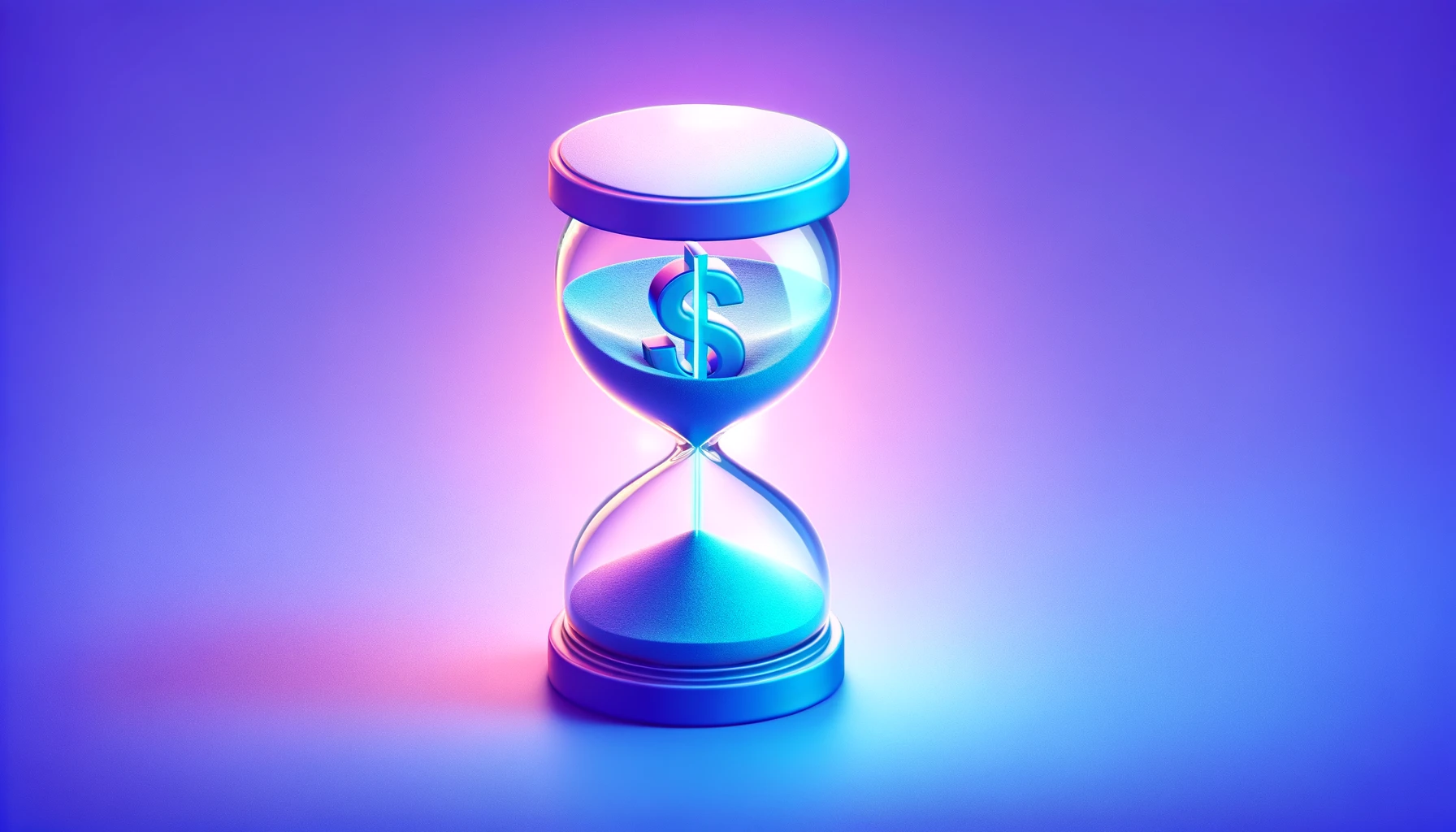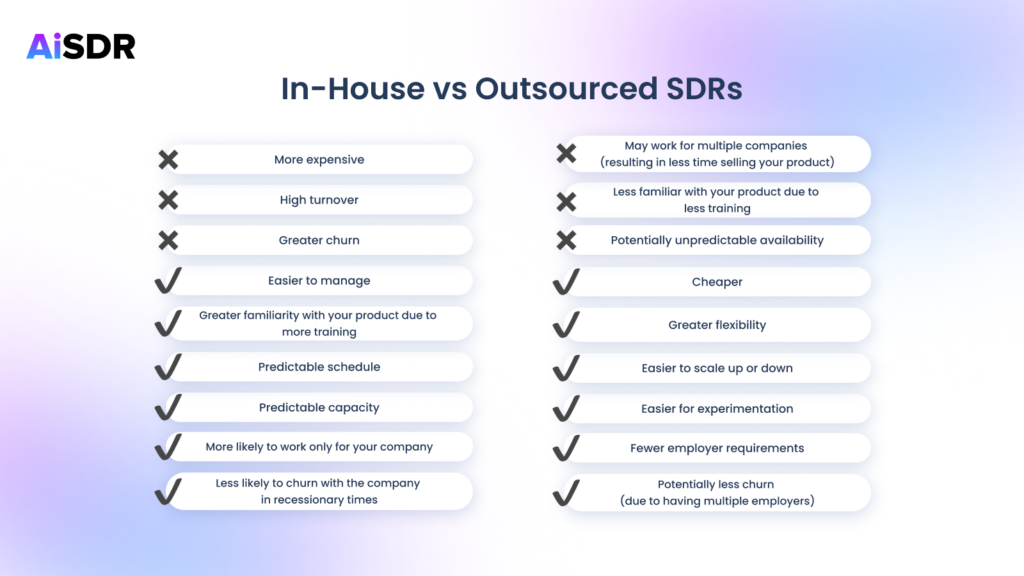What is the Cost of an SDR?

Considering expanding your sales team with an SDR? Here’s all you need to know to for good hiring ROI
In today’s fiercely competitive business environment, lead generation and sales prospecting are essential for building a steady revenue stream. Spearheading these efforts are Sales Development Representatives (SDRs).
SDRs play a critical role in the sales process. By qualifying leads and corresponding with potential clients, they’re responsible for many revenue growth opportunities.
However, building a solid team of SDR professionals capable of digging deep is a time-consuming and costly endeavor. But because they’re often the ones in the trenches making contact with potential customers and convincing hesitant clients to purchase products, good SDRs are essential.
So before adding one (or several), companies and businesses should know the standard cost of an in-house SDR and an outsourced SDR.
SDR responsibilities
Typically, an SDR is an entry-level position for young professionals who are still in the early stages of their careers. On average, they possess ~1.2 years of experience under their belt by the time they’re hired.
Within the sales pipeline, SDRs are primarily responsible for:
- Connecting with as many potential clients (aka “leads”) as possible
- Qualifying leads they connect with
- Driving leads through to the next step of the sales process
This entails learning more about the specifics of each lead, such as their particular pains, challenges, and failed attempts at solving issues. It also requires providing resources that could prove useful to the lead, as well as explaining how the company’s product can address the lead’s pain points.
Hiring an SDR
Many startups that are still in the earlier stages turn to a founder-led sales approach as their key strategy for driving growth and revenue. During the initial months, this approach makes sense. Not only is it cost-efficient, but founders have a better chance of converting leads.
But as the startup gains traction and grows its number of paying customers, the founder is going to get a lot busier. To avoid burnout, the founder will hire someone to take charge of the sales process. While the founder may contribute from time to time, they delegate the lion’s share.
So long as the startup remains on the smaller and leaner side, one salesperson is sufficient. But once the number of leads starts to skyrocket, one salesperson won’t cut it. The sales team will need to scale, which means more people will need to be brought in to prevent growth and revenue from stalling.
One option is to hire an SDR to shoulder some of the burden. One of an SDR’s main duties is to prevent leads (especially engaged leads) from going cold or falling through any cracks in your sales process. The longer leads are stuck in your pipeline, the more likely it is that your business will be surpassed by the competition.
But before you commit to hiring an SDR, you need to ask yourself if you really need one. Fortunately, there are some telltale signs.
How to know it’s time to hire an SDR
Here are several red flags that indicate your company might need an SDR:

- Leads don’t receive follow-ups
- No cross-selling or up-selling occurs
- Dead offers clog up your sales pipeline
- Your current salespeople are focused more on closing than prospecting
- Your current salespeople don’t follow up at the right time or fast enough
Using the last red flag as an example, it’s said that if a lead doesn’t receive a follow-up within 10 minutes, there’s a strong chance that they’ll move on to the next option.
This is where an SDR can really shine. They allow Sales Managers, Account Executives, and other higher-ups to focus more on closing the deal while the SDR makes sure engaged leads don’t slip away simply due to lack of follow-up.
Cost of an SDR
If you’ve decided that you definitely need an SDR, your first thought should be to estimate the cost incurred. You’ll need to not only look at the SDR’s base pay, but also at some additional costs associated with SDRs.
SDR salary
In your favor is the fact that since an SDR is generally an entry-level position, an SDR’s salary is oftentimes less than a sales rep, sales manager, or account executive.
With that being said, the average salary for an SDR in the United States is ~$54,000. The top SDRs can reap up to $75,000.
SDR productivity
You should also keep in mind that SDRs will take 3-4 months to ramp up and reach full productivity. Making matters more complicated, many SDRs only stay with their company for 22 months before climbing the ladder and moving on to their next company.
In other words, a company can expect around 18 months of full productivity from an SDR. This means the company ends up spending $18,000 in return for a short-term employee and limited productivity.
Adding to the complications, it will probably take almost a full year to understand whether an SDR generated any meaningful results or actual revenue. By the time you know if they’re good at sales development, they may already be one foot out of the door.
SDR software costs
To be successful, an SDR needs appropriate sales-related tools, such as sales prospecting tools, lead prospecting tools, or an automated sales system.
Some software options bear a considerable price tag, so if you’re not fiscally responsible, you may drain your budget on software that doesn’t generate revenue for your business.
Here are a few examples of SDR software and their respective price:
- ZoomInfo – $15K
- Salesforce – $900 (for 1 sales professional user)
- LeadIQ – $1,020 (for 1 user)
- AiSDR – $750 (per month for 1,000 emails sent)
Every dollar spent on software represents a dollar that could have been reinvested back into the business. Some software charges based on volume, while some software charges according to seats. So for a team of 4 SDRs for 1 manager, an option like Salesforce would cost the company $4,500.
When you’re small, these expenses may be manageable, but costs can run wild if you need to scale your SDRs and sales teams.
Still, if you want SDRs to succeed, you need to spend your funds. This is why it’s important to do your due diligence on software options. That way you only spend money on software that helps your business, not hurts.
In-house SDR costs
If you’re trying to stay lean and hire an outsourced SDR, then the salaries and cost of SDR software are probably your primary concerns.
But if you go the traditional route by hiring in-house, there are several more expenses you need to be aware of:
- Employment taxes & benefits
- Recruiting fees
- Initial training
- Office space
- Equipment (i.e. company laptop)
- Phone plan (if reimbursing for phone calls)
- Management
- Bonuses and/or commissions
The actual numbers will vary by state and country, but the average SDR cost per year in the United States is $139,120 (including salary). Considering that the mean salary is $54K, this means the additional expenses of hiring in-house total $85,120.
And this is just for the first year. While the second year will be a bit less thanks to less training needed, the SDR will most likely leave before the second year is over, which means you’re in for another expensive hiring and onboarding process.
In-house vs outsourced
At first glance, it seems like the question is a no-brainer. Outsourcing your SDRs is the cheaper alternative.
But like any difficult decision, there are trade-offs to outsourcing vs hiring in-house.
Here’s a generalized breakdown of some of these pros and cons.

There are valid arguments for hiring an in-house SDR team and an outsourced SDR team. The final decision ultimately depends on your company’s strategy and goals.
Do you want greater flexibility by ramping up SDRs during the holiday season? Then you might want an outsourced SDR. But if you’re more comfortable with a predictable capacity, commitment, and schedule for the next two years, then in-house might be worth the investment.
A third alternative for optimizing costs would be to look for an artificial intelligence sales tool that can handle certain routine sales prospecting tasks like booking meetings and sending follow-ups, especially if some of your current SDRs are underperforming. For a much smaller price tag, you can improve SDR performance, generate cost savings, and reinvest the savings into retaining high-performing SDRs.
Final thoughts
So long as your SDR is generating revenue for your company, then hiring the SDR was likely worthwhile.
However, this depends on what you’re having your SDRs do. If their primary duties are to follow up with leads in less than 10 minutes, as well as drive leads to book a demo or call, then there are more cost-efficient ways for you to use the capital you’re dedicating to sales, such as an AI sales assistant.
Virtual SDRs, such as AiSDR can achieve the same results at a fraction of the cost. It can also create custom, personalized email campaigns tailored to specific personas in moments.
Book a demo today for your chance to try out your first AI SDR.
FAQ
- What does SDR stand for in sales?
In Sales, SDR stands for “Sales Development Representative”. Some other common sales acronyms are BDR (business development representative), SR (sales representative), and AE (account executive).
- What does an SDR do?
An SDR is responsible for prospecting possible clients, identifying potential leads, initiating contact with leads, and getting leads to book a meeting or demo with the sales team.
- How much revenue should an SDR generate?
The revenue that an SDR should generate varies significantly according to the industry, product, and organizational goals. However, a common SDR benchmark is to generate enough leads and opportunities that result in revenue that’s 3-5 times higher than their salary. This means that if an SDR earns $10K, they should generate $30K–$50K in revenue.
- What are good numbers for an SDR?
Good SDR numbers depend on factors such as the industry, organizational size, and organizational goals. Some common benchmarks are 8–12 meetings booked per month, 30–50 quality leads per month, 20%–30% conversion rate from lead to opportunity, and revenue that’s 3-5 times higher than their salary.
- How many leads can an SDR work a day?
The number of leads that an SDR can work on varies based on the complexity of leads, the level of personalization required, and the tools available. On average, an SDR may work on 50 leads, but if a high degree of personalization is required, or if the tools available are insufficient for the task at hand, this number will go down.
- What is the average SDR to AE ratio?
The average ratio of SDRs to AEs will vary by industry and company size. While it is common for there to be 3 SDRs supporting 1 AE, this ratio can change to 2:1 or even 5+:1 depending on the sales process complexity and company growth strategy.











